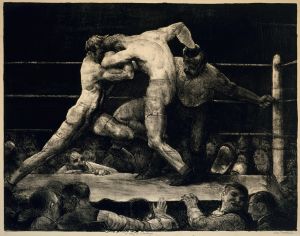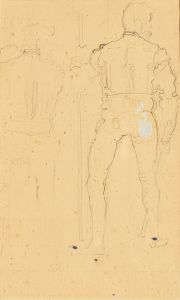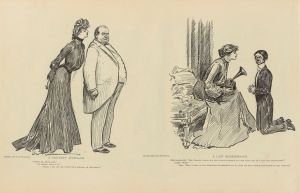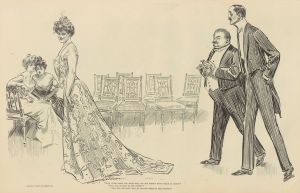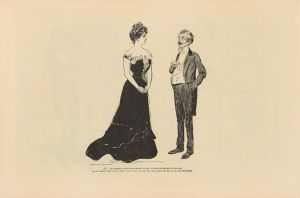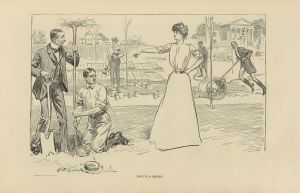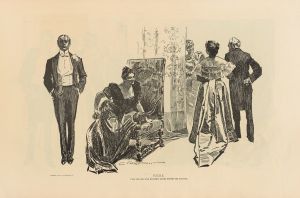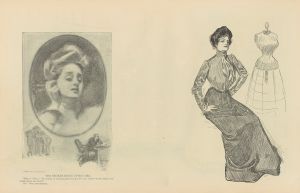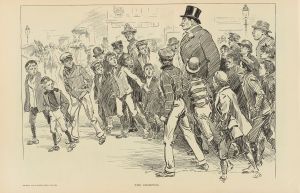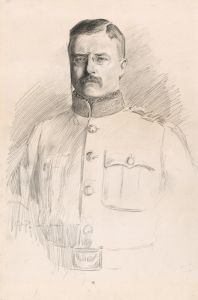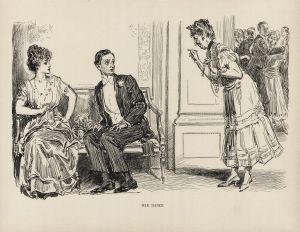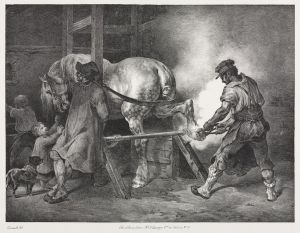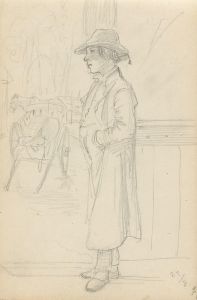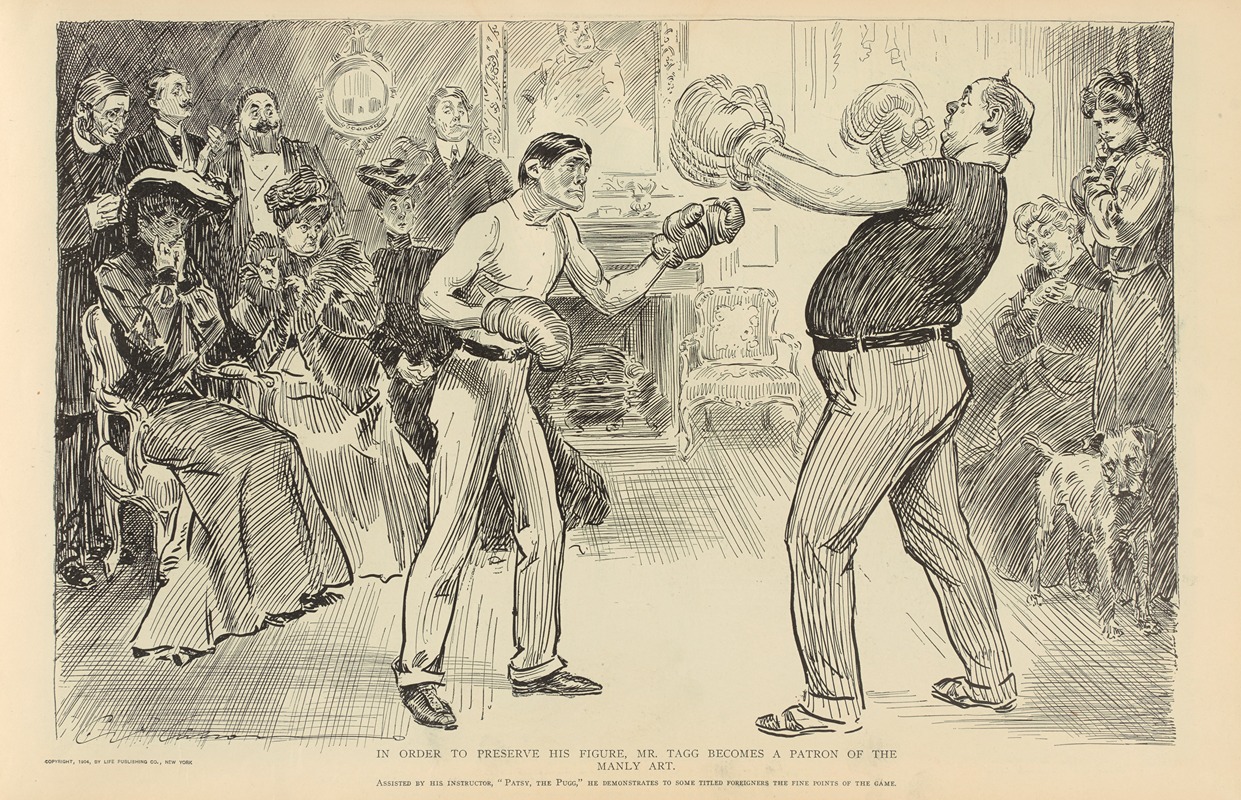
In order to preserve his figure, Mr. Tagg becomes a patron of the manly art
A hand-painted replica of Charles Dana Gibson’s masterpiece In order to preserve his figure, Mr. Tagg becomes a patron of the manly art, meticulously crafted by professional artists to capture the true essence of the original. Each piece is created with museum-quality canvas and rare mineral pigments, carefully painted by experienced artists with delicate brushstrokes and rich, layered colors to perfectly recreate the texture of the original artwork. Unlike machine-printed reproductions, this hand-painted version brings the painting to life, infused with the artist’s emotions and skill in every stroke. Whether for personal collection or home decoration, it instantly elevates the artistic atmosphere of any space.
Charles Dana Gibson's artwork In order to preserve his figure, Mr. Tagg becomes a patron of the manly art is a pen-and-ink illustration created by the renowned American artist and illustrator Charles Dana Gibson (1867–1944). Gibson is best known for his creation of the "Gibson Girl," an iconic representation of the idealized American woman at the turn of the 20th century. His works often depicted humorous or satirical scenes of upper-class society, gender roles, and social norms during the Gilded Age and early 20th century.
This particular illustration, like many of Gibson's works, was likely published in a popular magazine of the time, such as Life, Harper's Weekly, or Collier's Weekly. These publications frequently featured Gibson's drawings, which were celebrated for their wit, elegance, and sharp social commentary. The title of the piece, In order to preserve his figure, Mr. Tagg becomes a patron of the manly art, suggests a humorous narrative about Mr. Tagg's efforts to maintain his physical appearance by engaging in or supporting "the manly art," a term often associated with boxing or other forms of physical activity considered masculine during that era.
The illustration reflects Gibson's characteristic style, which combined fine detail with bold, confident lines. His ability to capture expressions, body language, and the nuances of social interaction made his work highly influential in shaping public perceptions of American society at the time. While the specific details of this piece's publication and reception are not widely documented, it fits within the broader context of Gibson's oeuvre, which often poked fun at societal expectations and the behaviors of the upper class.
As with many of Gibson's works, this illustration would have resonated with contemporary audiences for its humor and relatability, while also serving as a subtle critique of vanity and societal pressures. Today, Gibson's illustrations are appreciated both as works of art and as historical documents that provide insight into the culture and values of late 19th- and early 20th-century America.






